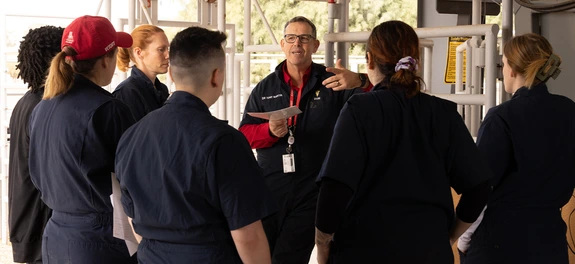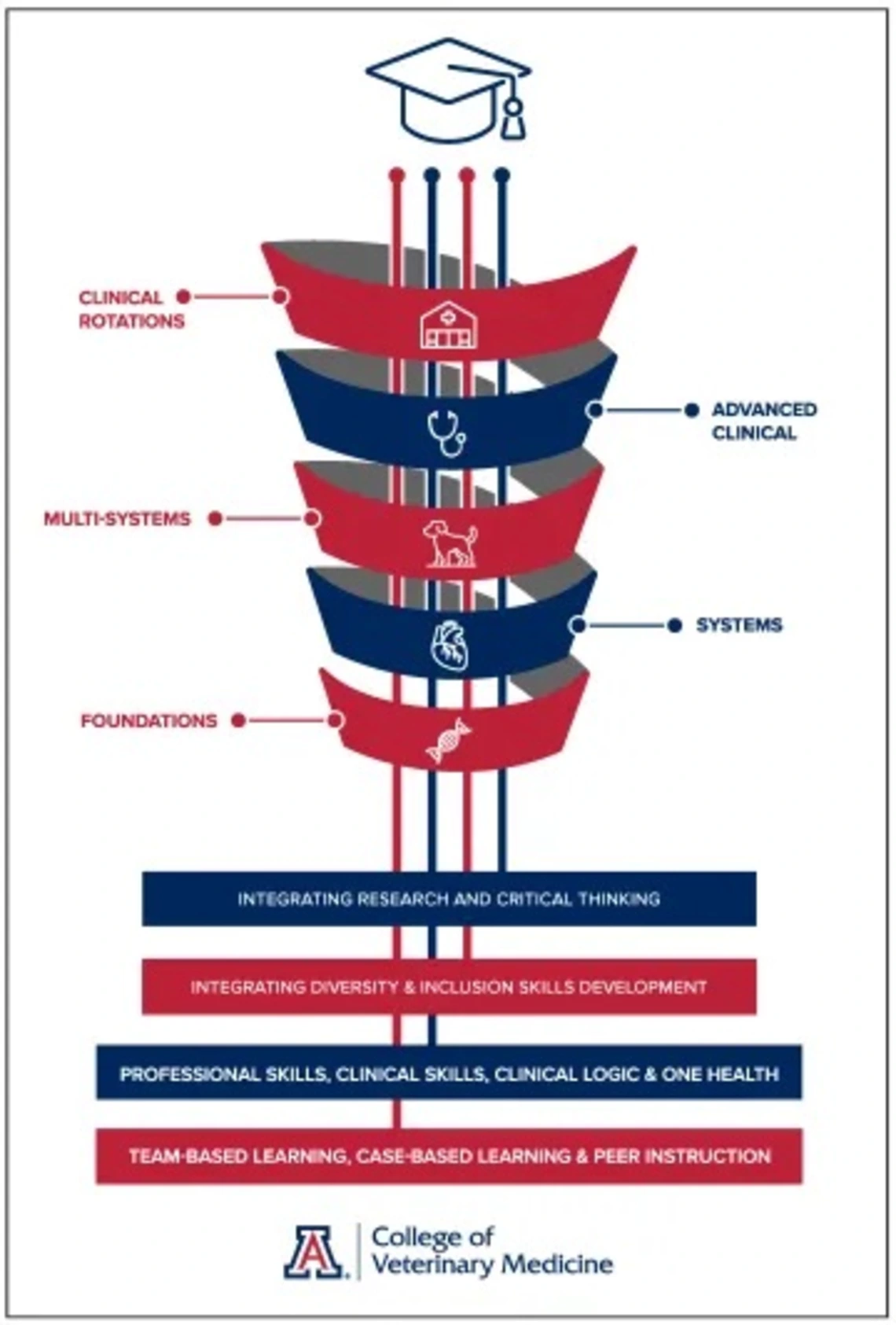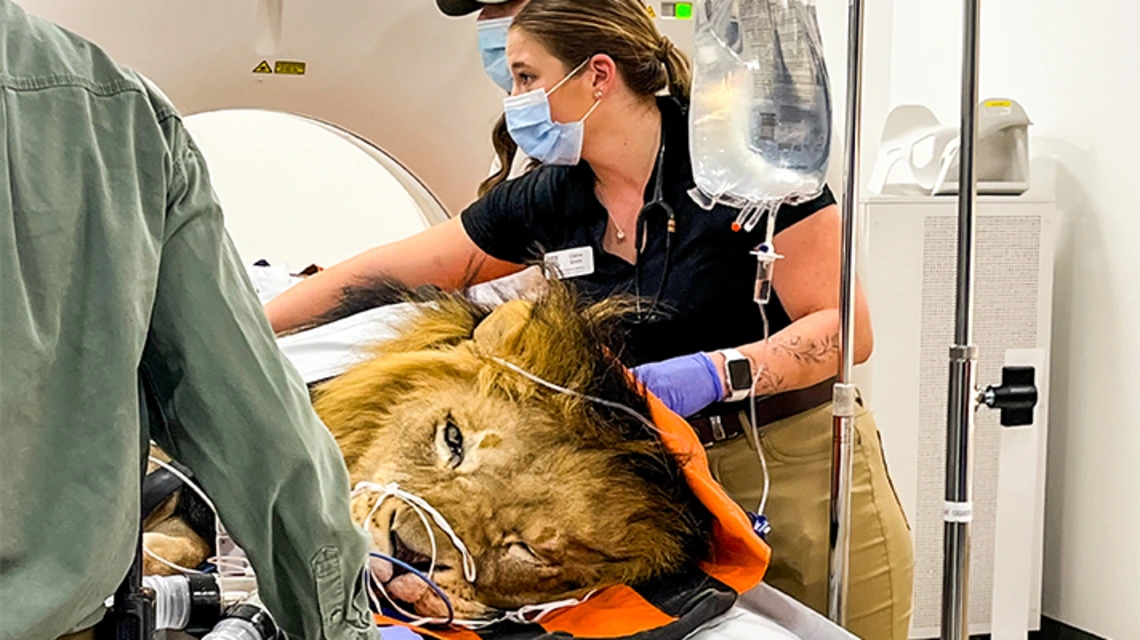
Curriculum
The Arizona College of Veterinary Medicine redefines veterinary education with a dynamic three-year curriculum built on proven teaching methods and active student engagement. Starting in week one, you will engage in team-based learning, acquire hands-on experience with live animals, utilize advanced animal simulations, and tackle progressively challenging clinical scenarios. This systematic approach develops not only your clinical expertise but also the professional competencies, including business acumen and communication skills, essential for veterinary leadership, ensuring you graduate practice-ready and equipped for lifelong success in an evolving profession.
- All CVM Academic Calendars
- Class of 2028 Curriculum
- Class of 2027 Curriculum
- Class of 2026 Curriculum
- Class of 2025 Curriculum
What Makes Our Curriculum Different?
The three-year, nine-semester curriculum immerses students in hands-on, experiential learning designed to cultivate the next generation of industry leaders. Through integrated coursework and practical application, students develop essential multidisciplinary skills while building foundations for personal wellness and lifelong professional growth.
Student-Centered Training
The Arizona CVM curriculum engages students from day one through evidence-based teaching methods designed to optimize learning outcomes. Students immediately dive into collaborative in-class activities, work with cutting-edge animal simulation technology, and gain hands-on experience with live animals—all while building the critical thinking and clinical skills essential for veterinary practice.
Developing Expertise
Our curriculum utilizes evidence-based teaching methods proven to develop veterinary expertise most effectively. Rather than passively attending lectures, students actively prepare before class and utilize classroom time for collaborative, team-based learning and hands-on training. Throughout each course, students tackle relevant, progressively challenging clinical cases that build problem-solving skills and essential competencies, ensuring they graduate as confident, practice-ready veterinarians.
Advance Your Career
Explore post-doctoral opportunities designed to advance your research and clinical expertise alongside leading faculty in a collaborative, interdisciplinary environment.



